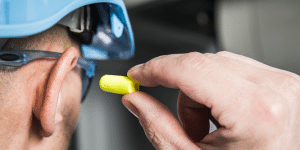TAKEAWAY: What is fentanyl, why is it used, and why are employers adding it to their drug detection program? Get answers to these frequently asked questions and more!
Jump Ahead
- What type of drug is fentanyl?
- How is fentanyl used?
- What are the effects of fentanyl use?
- How long after use can fentanyl be detected?
- Will fentanyl be detected as an opioid on a standard drug test?
- What type of fentanyl testing does SureHire offer?
- How is fentanyl detected through lab-based urine testing?
- What is the cut-off level for fentanyl drug testing?
- What is SureHire’s process for determining if a positive result for fentanyl is due to recreational or prescription use?
- What is the turn-around time for receiving lab-based fentanyl test results?
- What is the cost of adding fentanyl to a drug test?
- You May Also Be Interested In…
The opioid crisis continues to grow across North America, much of it driven by fentanyl and fentanyl derivatives. In many workplaces, testing for fentanyl abuse has become crucial to ensuring worker health and safety. Here are the answers to your questions about fentanyl testing.
What type of drug is fentanyl?
Fentanyl is a prescription drug often prescribed as a treatment for severe or chronic pain following surgery or as a substitute for other opioids if patients have become tolerant of them. Prescription forms of this synthetic opioid analgesic include Actiq®, Duragesic®, and Sublimaze®. Fentanyl is often compared to morphine but is 50 to 100 times more potent. This makes also makes it more dangerous.
In addition to its prescription form, fentanyl is produced in illicit labs and sold illegally. This is the fentanyl that is most often associated with overdoses.
How is fentanyl used?
Prescription fentanyl can be administered as a shot, skin patch, or lozenge. Fentanyl that is illegally produced generally comes in the form of a powder or liquid or is made into pills that look like prescription opioids. Illegal synthetic fentanyl can be delivered as a powder or liquid or made into pills that look like other prescription opioids. It is sold illegally on blotter paper, in nasal sprays, eye drops, or even candies. Street names for illegal fentanyl include apache, dance fever, friend, goodfellas, jackpot, murder8, tango, & cash.
Because it is cheap to produce and requires relatively small amounts to create a high, drug dealers will frequently mix fentanyl with other drugs, including heroin, cocaine, MDMA and methamphetamine.
What are the effects of fentanyl use?
Like other opioids, fentanyl binds to the body’s opioid receptors in parts of the brain that control pain and emotions. This is what allows it to be used to manage chronic or severe pain. Illegal fentanyl produces an intense, short-term high and feelings of euphoria. However, over time, the brain can become less sensitive to fentanyl while failing to react to normal stimuli, leading to addiction and overdose. Additional effects of fentanyl can include:
- Sedation
- Confusion
- Drowsiness
- Dizziness
- Nausea and vomiting
- Urinary retention
- Pupillary constriction
- Respiratory depression
- Reduced blood pressure
- Fainting
- Seizures
- Death
How long after use can fentanyl be detected?
The timeline for detection of fentanyl differs for every person based on their metabolism, body mass, the amount ingested, the potency of dose(s), physical activity, health conditions and other factors, making it difficult to determine an exact timeline for detection. The estimated detection window for fentanyl in urine is 8–72 hours; in oral fluid, the detection window is generally 12 hours.
Will fentanyl be detected as an opioid on a standard drug test?
Unfortunately, standard instant drug tests will not detect fentanyl, nor most other standard drug tests. This is because these tests are typically set up to detect opiates which metabolize into morphine. Fentanyl, unlike many opiates, does not metabolize into morphine. However, a targeted drug test can easily detect it in urine, hair and oral fluid tests. Fentanyl testing can be added to many standard drug tests.
What type of fentanyl testing does SureHire offer?
Fentanyl can be tested for as an add-on to any of the following SureHire tests:
- Urine Express Panel 5, 8 or 13
- Urine Lab Based 5, 8 or 13
- Oral Fluid Lab Based 8 or 13

Want to add Fentanyl to your drug testing program?
Contact us today and speak with a member of our team!
How is fentanyl detected through lab-based urine testing?
Laboratory urine testing for fentanyl involves immunoassay testing with a cut-off threshold of 2ng/mL. The test seeks to detect Fentanyl metabolites, including norfentanyl, hydroxyfentanyl and hydroxynorfentanyl.
What is the cut-off level for fentanyl drug testing?
Cut-off levels for fentanyl drug testing vary depending on the type of test that is ordered:
- Urine Express – 10ng/ml
- Urine Lab – 2ng/ml screening and 1ng/ml confirmation
- Oral Fluid – 1ng/ml
What is SureHire’s process for determining if a positive result for fentanyl is due to recreational or prescription use?
As with any result confirmed as positive through GC/MS testing, the results will be forwarded to our MRO (Medical Review Officer), who will attempt to contact the individual within 48 hours. Once contact is successful, the MRO will ask the individual if there is any reason for fentanyl to be detected in their sample.
If the individual discloses the use of fentanyl as being directed by their physician, the MRO will request proof of the prescription or evidence that the drug was administered at the direction of a physician, such as a letter from the physician. If the MRO receives these documents, they may overturn the test result and release it as negative.
However, if the individual cannot provide proof of legitimate use of fentanyl or the MRO is unable to contact the donor within 48 hours, the result may be released as positive. Because of its potency and the long list of side effects, the use of prescribed fentanyl may still be deemed as “Negative – Safety Sensitive” by the MRO.
What is the turn-around time for receiving lab-based fentanyl test results?
The turn-around time to receive lab-based fentanyl test results is between 2 to 5 business days.
What is the cost of adding fentanyl to a drug test?
Contact us to request a quote today!

Want to add Fentanyl to your drug testing program?
Contact us today and speak with a member of our team!
You May Also Be Interested In…
- Do You Have Reasonable Suspicion?
 Employers cannot initiate reasonable suspicion testing without first going through the 5-step process. Reasonable suspicion training provides critical information about how to initiate reasonable suspicion testing, including the 5-step process and other tools that employers can use to help manage the misuse of alcohol and drugs in the workplace.
Employers cannot initiate reasonable suspicion testing without first going through the 5-step process. Reasonable suspicion training provides critical information about how to initiate reasonable suspicion testing, including the 5-step process and other tools that employers can use to help manage the misuse of alcohol and drugs in the workplace. - An Employer’s Guide: What You and Your Employees Need to Know About DOT Drug & Alcohol Testing
 When implementing or maintaining DOT Drug & Alcohol testing, there are key areas that employers should consider.
When implementing or maintaining DOT Drug & Alcohol testing, there are key areas that employers should consider. - SureHire Occupational Testing Acquires COHR Health: A Positive Step Towards Safe, Healthy, Productive Workforces and Communities
 We are thrilled to announce that today, May 6, 2024, SureHire Occupational Testing has officially acquired COHR Health, a well-known leader in occupational health services. Read on…
We are thrilled to announce that today, May 6, 2024, SureHire Occupational Testing has officially acquired COHR Health, a well-known leader in occupational health services. Read on… - Occupational Testing Use Case – Mining
 In this case study, we will explore how mining companies can use various types of occupational tests to reduce Total Recordable Incident Rates (TRIR) long term.
In this case study, we will explore how mining companies can use various types of occupational tests to reduce Total Recordable Incident Rates (TRIR) long term. - 9 Strategies to Keep Workers Cool on Drilling Sites During Hot Summer Months
 This article delves into strategies to keep workers cool and safe on drilling sites during the hot summer months.
This article delves into strategies to keep workers cool and safe on drilling sites during the hot summer months. - Hearing Conservation Basics: How to Manage Occupational Noise
 Learn how to proactively mitigate occupational noise risks and help prevent NIHL among workers.
Learn how to proactively mitigate occupational noise risks and help prevent NIHL among workers.

